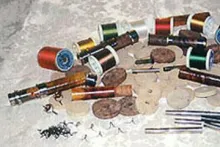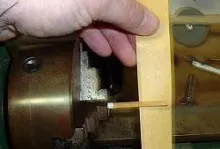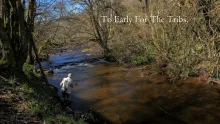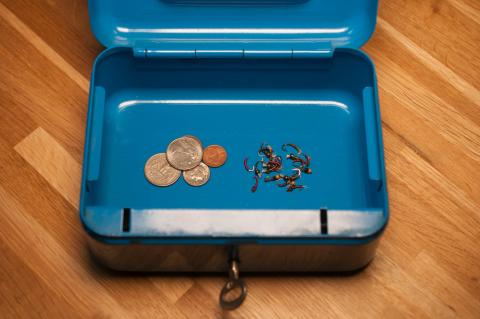Professional bamboo rod builder Harry Boyd has updated one of the most popular article series on this site, his articles on bamboo rod building from 2002-2004.
The original series of articles was originally published from 2002 to 2004. During the last 14-16 years I have changed many of the methods and tools I use in making rods. I began making rods full-time, as a profession, over eight years ago. Since the original articles were published I have taught scores of people to make bamboo rods. Some were master woodworkers, others were housewives. I only hope my students have learned as much from me as they have taught me. Working at rod making as a job has encouraged me to use better tools and equipment and more labor saving methods. I want to share those with you so that you will understand my mindset and adapt your own tools and methodology.
Bryan Powell, Longmont Colorado
Some of you who read this series of articles will find yourselves building a quality cane fly rod. I am largely pragmatic in the way I make rods and try to do things efficiently and at a reasonable cost. Rodmakers are a varied lot. Some make things as simple as possible, they do what works. Others approach rodmaking scientifically, from an engineering point of view. I hope to show you a little bit of both approaches.
As a professional rod maker my highest and only priority is to make every rod a little better than the previous one. Making a bamboo rod takes from 30-80 hours of hands-on labor, not counting the time for glue and varnish to dry. Your first rod may well take longer than that if you do it all on your own, though taking a class will shorten the learning curve dramatically. Don't let the time commitment scare you away. Most of the work can be done in increments of an hour or two at a time. Any investment of so much time demands that from start to finish, no shortcuts are taken.
Quality work demands that no compromises are made in materials. Only the finest nickel silver hardware and ferrules should be used on bamboo rods. Only select hardwoods should be used for reel seat fillers. Cork grips should be hand-formed from the finest cork on the market. I make every part on the rod other than the guides. Reel seats, ferrules, cork grips, and the bamboo blank itself are all made in my 16’x20’ home workshop.
Not so long ago, tricks of the trade in making rods were kept close to the vest. Everett Garrison and Hoagy Carmichael changed that when they published "A Master's Guide to Building a Bamboo Fly Rod". My friend Wayne Cattanach learned rodmaking through trial and error, and brought this arcane art down to earth when he published "Handcrating a Bamboo Fly Rod". Today there are scores of websites, articles and books dedicated to helping you build your first rod. In this series of articles I'll point you towards many of the most useful resources available.
A wise man once said "the hardest part of painting your house is opening the paint can," or getting started. Building a bamboo rod begins with gathering the necessary tools and components. From the over 1000 species of bamboo on earth, only one has all the qualities for making a great fly rod. The premium bamboo for making fly rods is Pseudosasa (Arundinaria) amabilis. There is a seven acre patch growing wild a few miles from my home in Louisiana. While it does grow here in the US, only that grown commercially in a small hillside region along the Sui River in China is the only material suitable for building bamboo rods. Charles H. Demarest, Inc. imported cane for rod makers for over 80 years. I got all my bamboo from the kind folks at Demarest until that company dissolved after the death of its owners. Today my bamboo comes from the Royer family in Seattle.
Rodmaking bamboo comes in "culms" or sticks, twelve feet long and about two inches in diameter. Since it is a natural material, not all bamboo should be used. In years past, cane often arrived from China with burn marks, leaf nodes, and "grower's marks" - a series of Chinese characters which identify the grower. These less than perfect culms could often be used with care taken to use only the best parts. Andy Royer’s efforts at educating growers in China about the qualities rod makers want in bamboo have largely eliminated the bad bamboo. I don’t think I have received an unusable stick of bamboo in 10+ years.
Once the bamboo is selected it is split into narrow strips. To make a two piece rod with two tips requires 18 narrow strips. Each strip contains a number of nodes, which must be flattened, smoothed, and straightened. Each strip is then hand planed into a 60* triangle and heat treated to give the bamboo even more resiliency. Finally a taper is planed into each strip, and the strips are glued together forming a rod section. Once the hardware is installed and the rod is varnished, you have a treasure to enjoy for years to come.
Hand picked for this article
- Log in to post comments




















